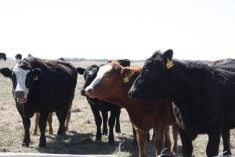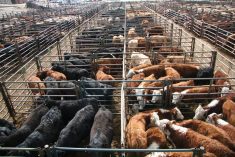LETHBRIDGE, Alta. – Understanding health problems faced by livestock workers may also help intensive livestock operations better understand their neighbours’ complaints over barn emissions.
“We urgently need more data on (ILO’s) effects on neighbours,” said a University of Nebraska physician who studies how ILOs affect worker health.
Susanna Von Essen told a manure management conference in Lethbridge on June 26 that long-term studies of 15-20 years are needed to track cumulative health effects.
While there is no proof that barn emissions trigger asthma and pulmonary disease, she said pre-existing conditions may be worsened by exposure to odour and dust. Several studies have been done, but more work is needed to document possible ill effects over time.
Read Also

Canada told trade crisis solutions in its hands
Canadians and Canadian exporters need to accept that the old rules of trade are over, and open access to the U.S. market may also be over, says the chief financial correspondent for CTV News.
“When we inspect the neighbourhood residents, they have complaints similar to the workers,” Von Essen said.
The problem is that most complaints are based on subjective reports with no supportive scientific data. Acceptable data might include pulmonary function tests on ILO neighbours.
Those living near hog farms appear to have more respiratory and mucous membrane complaints. However, people with chronic complaints need a thorough medical examination to ensure there are no other probable causes.
Odours are a problem for people with chronic obstructive pulmonary disease, but the symptoms could be triggered by all kinds of odour and pollution.
Some information has been collected on the occupational health of swine barn workers, but little is known about their health over time.
Barn workers tend to be healthy adults, but they are subjected to an array of hazards such as respiratory infections, sprains, bruises, severe head trauma, fractures, electrocution and repetitive motion injury.
In addition, physicians suspect that many health problems go unreported. Workers may fear lost wages or an unsympathetic supervisor. In other cases, people quit the job and do not complain.
It takes some people five to seven years before they develop serious complaints from exposure to pollution while others suffer ill effects within weeks.

















